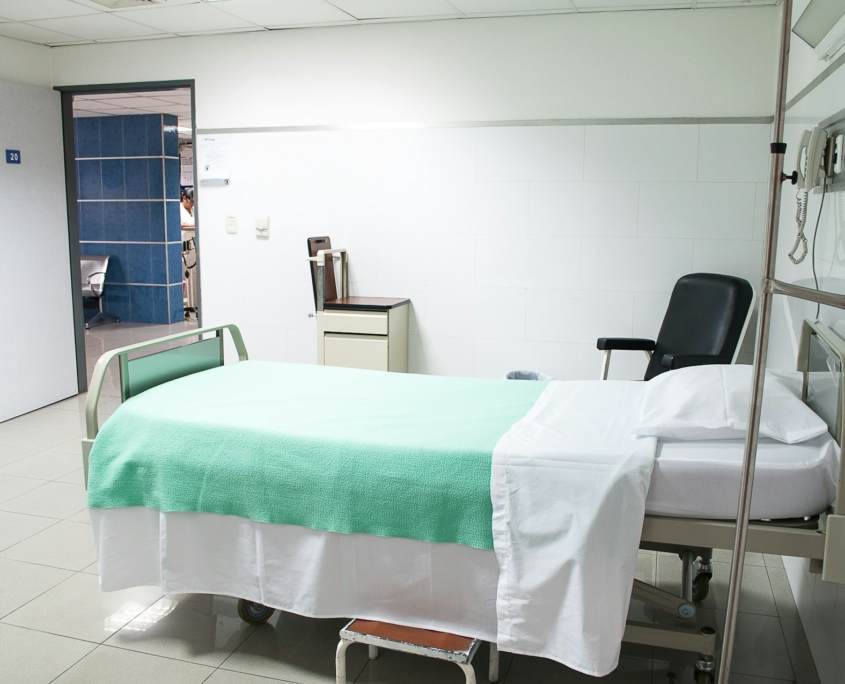Microfinance and Health Care Accessibility in Sub-Saharan Africa
 Sub-Saharan Africa faces significant health care challenges, including limited access to medical facilities, a shortage of health care professionals and high treatment costs. Microfinance and health care initiatives have emerged as powerful tools to address these issues, providing financial support and a beacon of hope for communities traditionally marginalized from conventional health care systems.
Sub-Saharan Africa faces significant health care challenges, including limited access to medical facilities, a shortage of health care professionals and high treatment costs. Microfinance and health care initiatives have emerged as powerful tools to address these issues, providing financial support and a beacon of hope for communities traditionally marginalized from conventional health care systems.
The Link: Microfinance and Health Care
Microfinance institutions (MFIs) in Sub-Saharan Africa are not just about small business loans anymore; they have expanded their services to include health care financing. MFIs offer small loans, savings and other financial services to individuals and communities who lack access to traditional banking.
This shift is a response to the acute need for accessible health care services, especially in rural and impoverished urban areas. These services enable people to invest in health-related expenses, such as medical treatments, health insurance and preventive care, thereby improving overall health care accessibility. Furthermore, by offering loans, savings products and health insurance, MFIs are enabling low-income individuals and families to afford medical treatments and preventive care that were previously out of reach.
The impact of microfinance on health care accessibility is profound. In countries like Ghana, Kenya and Rwanda, microfinance initiatives have been linked to improved health outcomes, including increased rates of immunization, better maternal health services and reduced incidence of common diseases like malaria and tuberculosis.
Case Studies of Microfinance in Action
- Microfinance and Health Protection (MAHP). Launched in January 2006 with support from the Bill and Melinda Gates Foundation, the MAHP initiative by Freedom from Hunger represents a landmark effort to blend microfinance with health services, aiming to mitigate the harsh impacts health issues can have on the financial stability of the very poor. By developing and testing an array of integrated products and services, MAHP has been able to reach nearly 2.3 million microfinance clients across ten countries, offering health education, financing and micro-insurance, alongside innovative linkages to health care providers and access to essential health products. These offerings are designed to enhance knowledge, change behaviors and provide financial tools that enable poor families to better manage health-related expenses, ensuring that health care is more accessible and affordable. The initiative’s comprehensive approach not only safeguards the health of clients and their families but also contributes to microfinance institutions’ sustainability and social mission, demonstrating a scalable model for improving health outcomes and financial resilience among the world’s impoverished communities.
- Advans Nigeria. In Nigeria, despite the launch of a microfinance policy aimed at enhancing financial inclusion, a significant portion of the adult population remains excluded from formal financial services. To address this, the Central Bank of Nigeria (CBN) revised the Microfinance Policy, Regulatory and Supervisory Framework in 2011, recognizing and bringing informal financial institutions under its supervision to improve the delivery of financial services. Advans La Fayette Microfinance Bank, leveraging this regulatory environment, partnered with AXA MANSARD to launch innovative micro-health insurance products in February 2021. These products, including ‘Advans Malacare’ for malaria treatment and ‘Advans Medic’ for general medical consultations and treatments, aim to provide affordable health care access to their clients. This initiative underscores Advans Nigeria’s commitment to financial inclusion by ensuring their clients’ welfare through accessible and affordable medical coverage, aligning with their broader strategy to support clients’ financial security and independence, while fostering the growth of small businesses.
Limitations and Future Perspectives
Microfinance holds promise for enhancing health care accessibility in Sub-Saharan Africa, but it faces challenges such as high interest rates that may burden borrowers and a narrow focus on financial products at the expense of comprehensive health care solutions. Additionally, MFIs often encounter funding and scalability issues that curb their reach and effectiveness.
Furthermore, a more integrated approach combining microfinance with health care services could significantly benefit Sub-Saharan Africa. This strategy would involve health education, preventive care and collaborations with health care providers to boost MFIs’ impact. The success of integrating health care and financial services into the region’s future hinges on cross-sector collaboration. Governments have a vital role in fostering regulatory environments conducive to this integration, while international agencies and NGOs can offer essential technical support and funding for pilot projects. Crucially, the engagement of local communities is paramount to ensure the initiatives align with their health and financial needs.
To maximize the potential of microfinance in transforming health care accessibility, further research and investment are essential. This will help scale up successful models and address the health and economic challenges facing Sub-Saharan Africa more effectively.
Looking Ahead
Microfinance initiatives in Sub-Saharan Africa play a crucial role in bridging the gap between underserved communities and health care services. Despite facing challenges, the potential of microfinance to facilitate better health care outcomes is immense. With continued innovation and support, microfinance can significantly contribute to the health and well-being of Sub-Saharan African communities.
– Hosna Hossain
Photo: Unsplash
